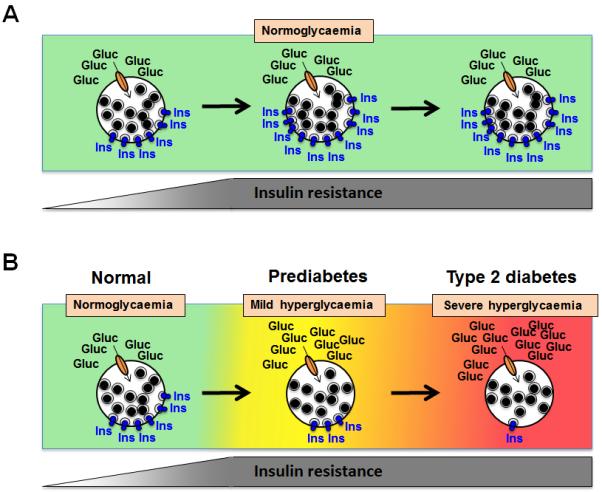Fig. 1.

Relationship between beta cell insulin release and peripheral insulin sensitivity in determining states of glycaemic control. Individuals are classified as having normal glucose tolerance, prediabetes or type 2 diabetes based on the evaluation of fasting plasma glucose levels and/or 2 h plasma glucose values after a 75 g OGTT, or HbA1c measurement. With emerging peripheral insulin resistance, beta cells compensate by releasing more insulin (as depicted); (a) in individuals who are not at risk of developing abnormalities of glucose tolerance, the beta cells continue to release more insulin in response to prolonged insulin resistance, and potentially beta cell mass also increases, thereby maintaining normoglycaemia over time. (b) In individuals who are at increased risk of developing diabetes because of genetic or epigenetic susceptibility, beta cells are unable to adequately compensate for emerging peripheral insulin resistance because insulin release is insufficient for the degree of insulin resistance, and mild hyperglycaemia (prediabetes) develops. Over time, the progressive nature of the beta cell defect results in ongoing loss of secretory function and a further decline in beta cell mass such that severe hyperglycaemia (type 2 diabetes) develops. Gluc, glucose; Ins, insulin. This figure is available as part of a downloadable slide set
